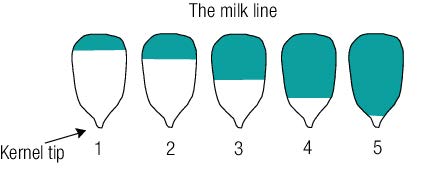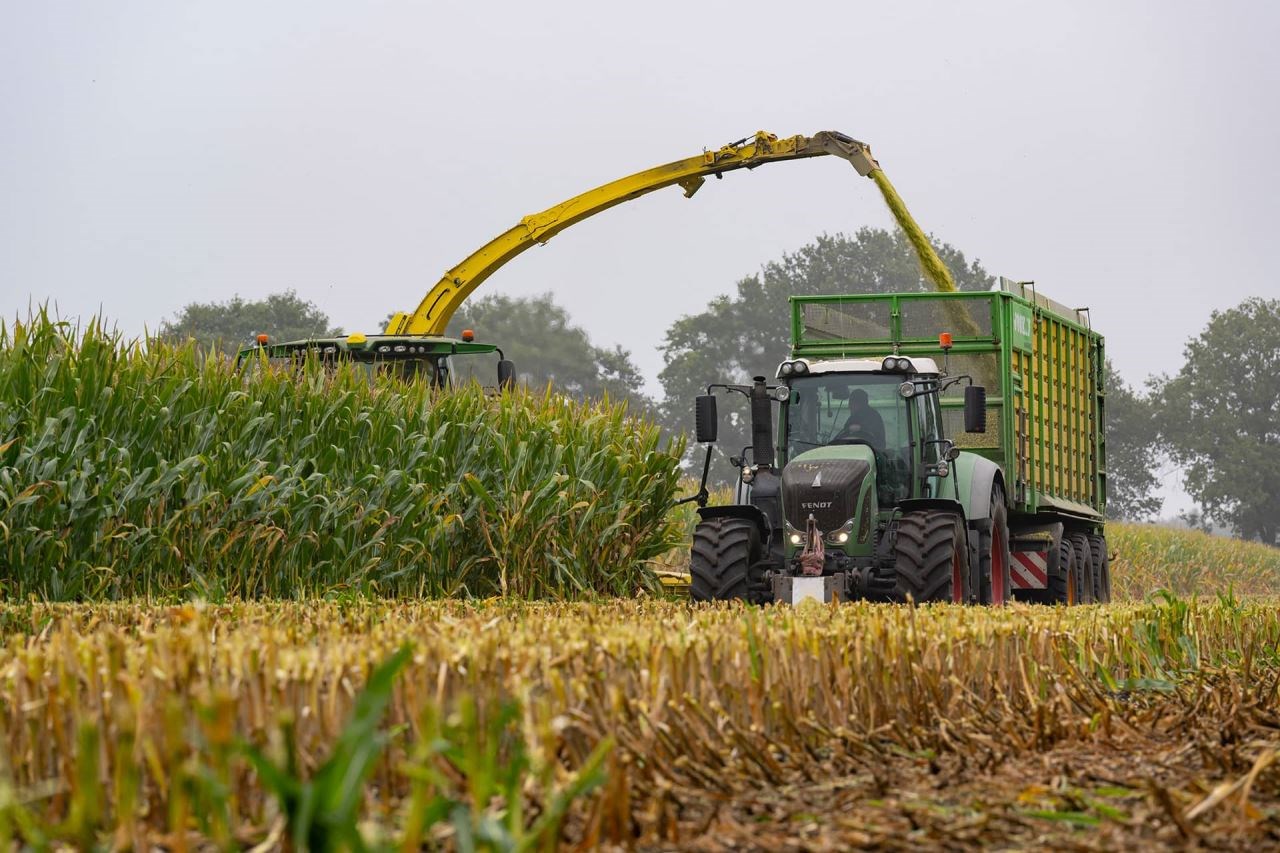The recent hot weather and lack of rain has certainly played havoc with forage production and usage.
Some of our grazing herds are feeding full winter rations already and silage pits on the whole certainly look emptier than we would like to see. With this in mind, attention turns to maize crops and assessing quality whilst beginning to think about harvest dates.
The hot weather has meant that maize has accelerated and pushed through its growth stages this year. In light soil this has sometimes come at the expense of plant height and structure with some crops feeling quite weak when walking through them.
When assessing crops for their fitness for harvest, the quickest and easiest test to gauge the dry mature and maturity of the crop is the “milk-line” test. This test involved collecting a number of random cobs through the field and assessing kernels to see where the milk-line meets the starch. This test helps to give an indicator of crop maturity and dry matter content.
The diagram below explains how this milk line moves down through the crop as it becomes more mature:

When harvesting maize, target dry matters should be between 31-35%. To achieve this, the milk line needs to be 1/3rd or ½ way down the kernel. Sometimes it can be difficult to see the milk line, therefore break the cob in half and then cut into the grain from the outer edge until you get milk. With some plants dying, it might be worth cutting when the grains are only just creamy, or the entire crop could be too dry and mould become a problem on the face. Given the variation in maize crops we have seen on farms this year; a good number of cobs will be required to obtain a representative sample.
We are also seeing a number of crops which only contain one cob per plant. Given the starch content is the most important reason for growing, we need to be basing our harvesting decisions on the dry matter and grain stage of the cob. Allowing the kernels to over-mature will result in a reduction in starch digestibility and increases the likelihood of unprocessed kernels to reach the clamp.
It is therefore advisable to check your maize crops weekly from now on, as harvesting could well be earlier this year!
Clamping Management
- Fill the clamp in thin layers, using a shallow wedge to ensure the whole clamp including the shoulders are well compacted.
- Fill the clamp in this “U” shape as you get better compaction and reduce the chance of damaging machinery by catching the RSJs.
- Making maize silage is a big investment so it is key to get your clamp management correct. Consolidate well by having an extra tractor rolling the clamp.
- Sheeting is important to reduce dry matter losses. Side sheets, cling film layer, plastic and heavy-duty cover will all improve the feed out quality.
- Put weight on the sheet, sandbags around the sides and on top. Using bales on the ramp will significantly reduce wastage and spoilage on the ramp.
Additive?
As it stands now, there should be little need for any additive – the best additive in our view is diesel in the tank and extra rolling.
For any help in assessing crops or discussing forage requirements for the winter, then please don’t hesitate to get in touch!
Are you meeting the nutritional needs of your herd?
Continued reviews of nutritional management and dietary requirements of your herd can ensure improved feed efficiency, health and productivity. We have huge experience developing dairy businesses by combining technical and business solutions.
Get in touch by calling 01666 817278 or emailing douglas@douglasgreenconsulting.co.uk - We would be delighted to help.
100% independent, 100% for you.



